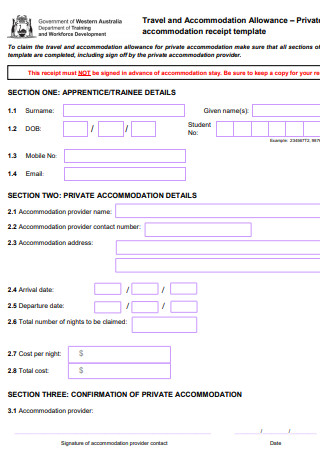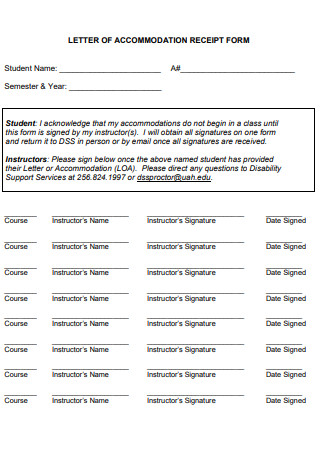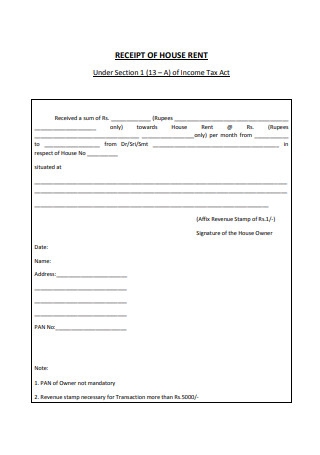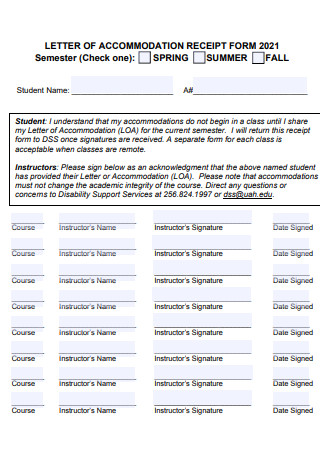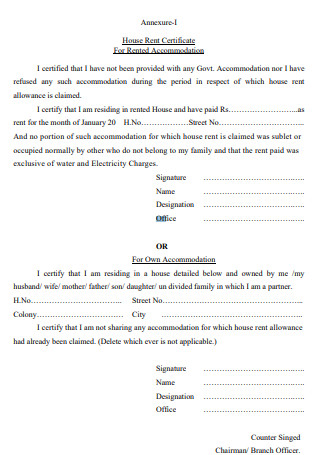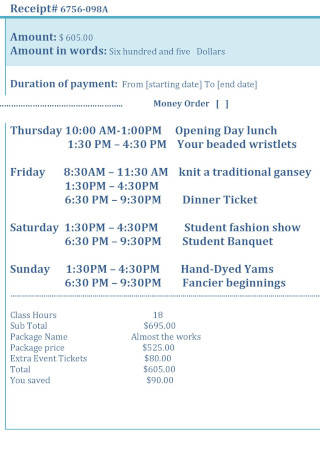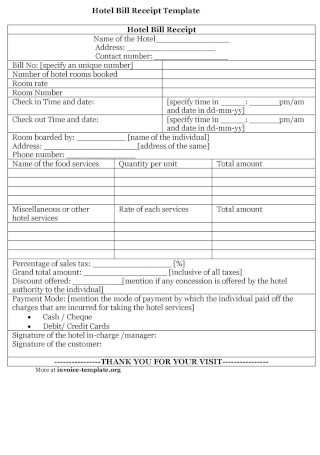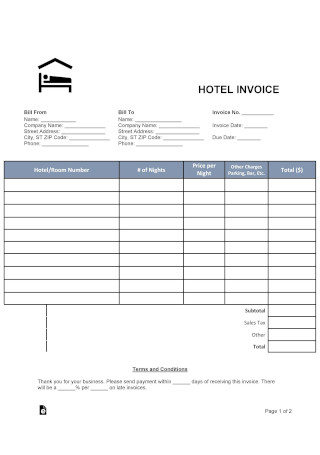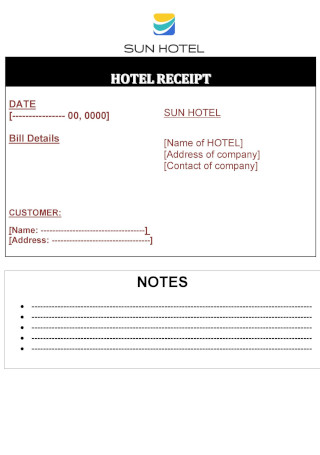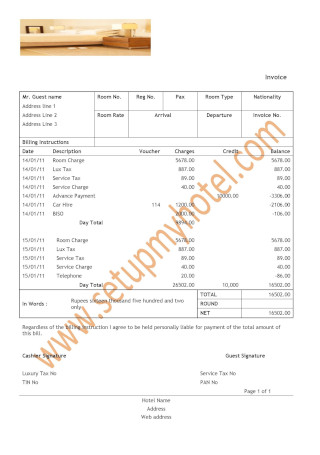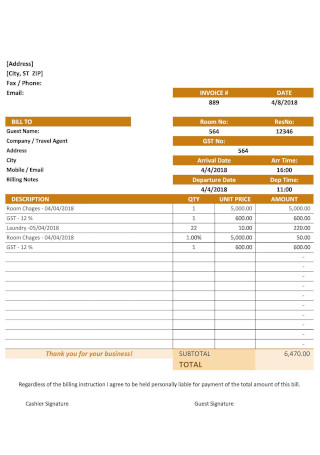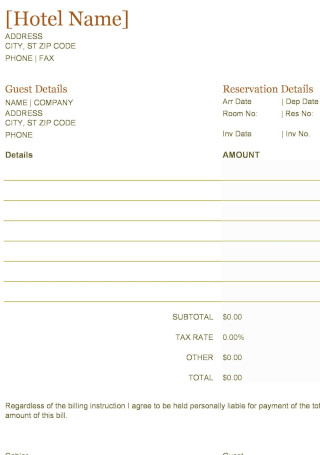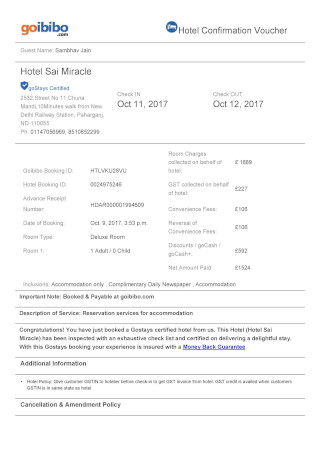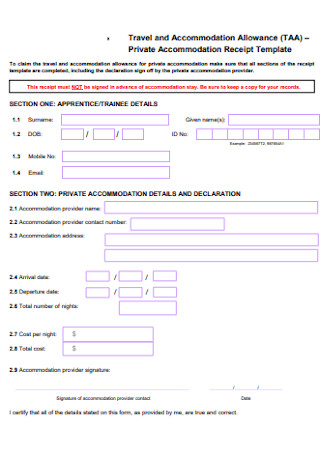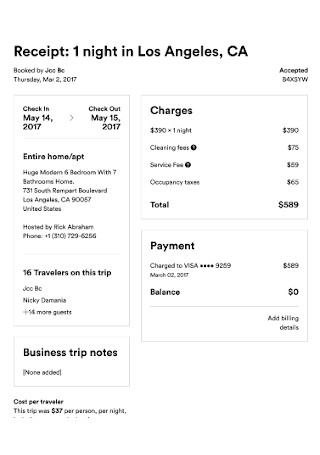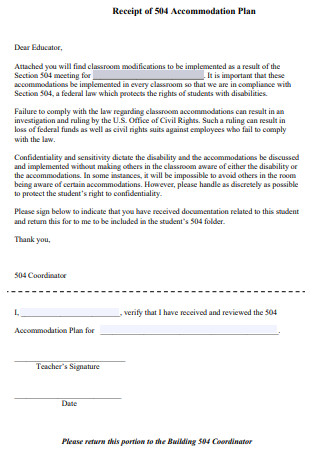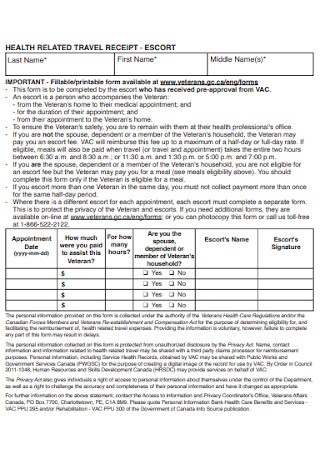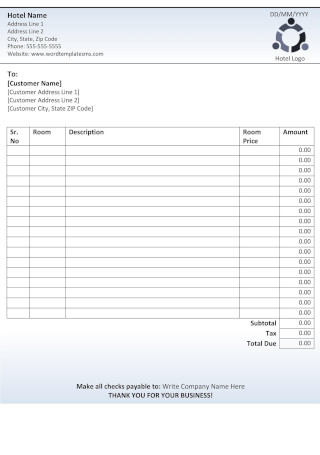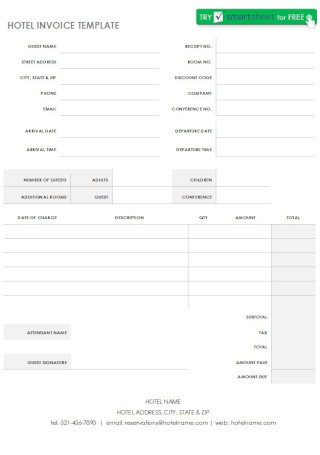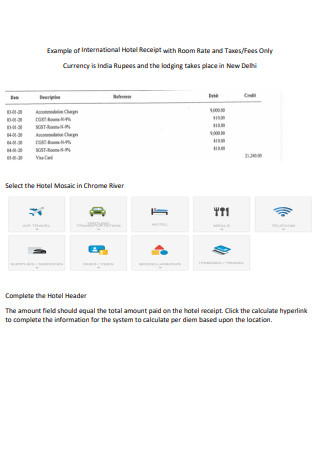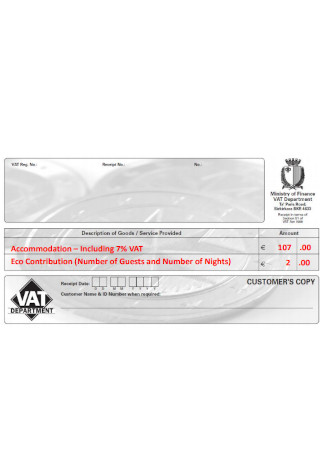20+ Accommodation Receipts
FREE Accommodation Receipt s to Download
What Is an Accommodation Receipt?
An accommodation receipt is a printed or electronic document that is given to a guest for staying at a hotel or any other accommodation establishment. It serves as proof and acknowledgement of the guest’s stay. An accommodation receipt also contains the breakdown of the items and fees charged to the guest.
According to Statista, one of the hardest hit sectors of the COVID-19 pandemic was the hotel and hospitality industry. Due to the pandemic, hotel occupancy rates and the livelihood of millions of employees in the industry suffered greatly. The global health crisis forced many in the industry to reassess and upgrade their hotel’s safety and hygiene practices. In the post-pandemic era, recent surveys have shown that 60% of respondents would be more comfortable staying in a hotel if there was more frequent cleaning and disinfecting measures.
Types of Accommodation
Nowadays, there are many different types of hotels that cater to various markets. Capsule hotels and hostels are popular among younger travelers and backpackers. Bed and breakfast type hotels are a favorite for budget-minded tourists who are looking for both function and comfort. The examples below are some of the common types of accommodation:
Hotels: It comes as no surprise that people are most familiar with the typical chain hotel. Companies that operate chain hotels set up locations in several key places and cities; and are mostly concerned with the quantity of hotels. These hotels usually belong to well-known and established hospitality brands. Some examples would be Westin Hotels and Resorts, Marriott International, and InterContinental Hotel Group. Hostels: Hostels are budget-friendly and are popular among the backpacker traveler/tourist market. Some hostels are dormitory-like with communal restrooms and dining spaces. Other hostels combine elements of a boutique hotel and a motel that highlight their eccentricity and individuality, yet still remain affordable. Many backpackers and millennials book hostels because of its inexpensive and straightforward accommodation. Airbnb: Another popular accommodation choice, aside from hotels, is a rented home or apartment. Vacation rental companies like Airbnb have really taken off thanks to the ease and convenience of social networking platforms. These types of accommodation have become a game changer in the hospitality sector. It works both ways where hosts can advertise their home or apartment online and other people can rent it for an agreed period of time. It is essentially a win-win situation for everyone. Not only is it a lucrative passive income for some people, it is a novel way to branch out and experience different types of accommodation styles. Rest Houses and Holiday Homes: Whatever you want to call it, rest houses and beach houses are a popular choice for families and big groups. Similar to the vacation rental business, guests can rent and occupy the entire house or living space. Many of these rest houses emphasize luxury, privacy, and exclusivity. Guests pay a premium price to rent an entire home that typically comes with a pool or beach front. But not all rest houses are beach houses or luxury villas, others are situated on top of cool, crisp mountains. Business Hotel: Most major cities usually have dozens of business hotels scattered around the area. From the name itself, business hotels are ideal for business travelers or people whose purpose for travel is work or professional development. These types of hotels are strategically situated in and around a city’s Central Business District or CBD. This makes it accessible and ideal for professionals who have to attend seminars or meetings while maximizing their time during the day. Business hotels are like regular hotels but are equipped with several conference rooms and boardrooms, complete with audiovisual amenities. Curated meeting packages that’s inclusive of room use and meals/snacks are also popular for day seminars or events. Eco Hotel: Typical hotels are notorious for their unsustainable practices and for producing tons of waste. But in recent years, eco hotels have gradually built a following. Environment-conscious travelers can ease their guilt a little bit when travelling. These types of hotels engage in proactive ways to reduce their carbon footprint- whether that be reusing rainwater, composting, or even upcycling furniture. Eco hotels aim to set themselves apart by promoting green practices and sustainable hotel policies. Capsule Hotel: Popular in East Asia, capsule hotels cater to on-the-go travelers, who are budget-conscious and practical. Some backpackers and younger tourists have jam packed itineraries and only need a hotel to sleep and to shower. In these modern hotels, a guest is not assigned a room, but a small capsule-bed or space to sleep in. Multiple capsule beds can be in one single room. Cabins and Lodges: Tents are popular with outdoor enthusiasts and campers. But mountain resorts and ski lodges offer alternative accommodations. Log cabins are popular in the winter or in more temperate states with cooler climates. Ski resorts are popular with vacationing families. These types of accommodations usually also have hot springs, jacuzzies, or indoor pools. Boutique Hotel: A boutique hotel is unique in such a way that its distinct traits are its eccentricity and individualism. Some of these hotels are themed or carefully curated. But what sets it apart from your typical chain hotel is the intention and purposefulness that goes into the design, personality, and character of the hotel. This can be manifested in a number of ways like through the hotel’s architecture, furniture, personalized service, or quirky rooms. Some even go through the trouble of designing the boutique hotel in such a way that every guest room is different. Bed and Breakfast: For travelers and tourists who prefer affordable yet cozy accommodations, a bed and breakfast type hotel is an ideal choice. Usually smaller than your typical hotel, a bed and breakfast offers guests the regular amenities and conveniences of a hotel, with a breakfast meal that’s inclusive of the room rate. Guests who stay in these types of hotels usually only stay overnight or don’t spend more than a couple of nights.
Tips for a Comfortable Accommodation Stay
There are many ways to ensure your hotel stay is as comfortable and hassle-free as possible. It is not always a guarantee, but taking proactive steps prior, during, and after your stay will lessen the chances of encountering unnecessary problems. Keep in mind the following tips on your next staycation:
Research is essential: This is one of the most important steps you can take before checking in. If you book using an online platform, you will normally get the basic details of the place you’re staying in. Make sure to note what’s included or not included in your room rate. Check out the hotel’s website or browse through their public photos so you’ll get an idea of the facilities and amenities. It’s also good to run through a couple of guest reviews. You’ll know a hotel is a good one if the reviews are consistent and the ratings are fair and credible. Book during low season: Hotel room rates fluctuate and change over certain times of the year. Summer and the holiday season are regular peak seasons for most hotels and resorts. If you are looking to score promos or discounted room rates, try booking during low season or off peak months. Secure your valuables: Hotel rooms have safes or vaults for a reason. Especially for foreign tourists, it is important to keep your valuables secure. Never leave your passport just anywhere. Keep personal items like wallets and mobile phones with you. Store all other valuable items in the safe whenever you head out. Keep your room clean: Take advantage of the regular housekeeping services that hotels offer. After all, you are paying for it. Treat your hotel room like you would your own room. Strive to keep it clean. It doesn’t only keep unwanted pests and rodents away, but tidiness also speaks about your character. Hotel rooms are not an excuse to trash everything or disregard cleanliness. Try alternative ways: Have you ever found yourself booking the last room on Tripadvisor or Booking.com? Hotels have peak seasons and low or non-peak seasons. Usually, only a handful of rooms are advertised on booking platforms like Agoda or Tripadvisor. A hotel may be considered ‘fully booked’, although it doesn’t always mean there are unavailable rooms. If you are unable to reserve a room online, try calling the hotel to double check availability. Check the surrounding area: By area, this means both internal and external areas. Don’t just research the hotel itself, try checking the surrounding area as well. It is good to acquaint yourself with where the nearest convenience store or grocery is, nearby parks or malls, train stations, etc. Before booking a hotel room, spend some time researching the surrounding neighborhood. Is it a busy and noisy business district? Or is the hotel located on the outskirts of town where it’s more quiet? Aside from the external areas, another good tip is to check your room immediately upon arrival. Make sure the toilet flushes, the locks work, the telephone and air conditioner are functioning, etc. Don’t be afraid to ask: If you forgot to pack something, establishments will normally let you borrow hotel items free of charge. Hospitality professionals are trained to deliver good customer service and most are happy to accommodate a guest’s request. Items that you may borrow from the hotel include hairdryers, ironing boards, extra blankets, pillows, chargers, baby cots, etc.
How to Create an Accommodation Receipt
An accommodation receipt is pretty straightforward. All you need is the right format and some basic information. Follow the simple steps below to create your own receipt:
Step 1: Guest Information
Hotels have standard forms they use as official receipts. These accommodation receipts acknowledge the guest’s stay and are given at check out. It typically contains the hotel or brand logo and is formatted to include the hotel’s address, contact information, and website. Include the invoice number or official receipt number. Input the guest’s basic information such as the complete name, address, and contact details.
Step 2: Billing Information
The format of the receipt will depend on the hotel. Usually, a simple table or a one-page document is sufficient. Indicate the guest’s check-in and check-out dates and time, room rate, type and number of rooms occupied, room number, and the total amount to be paid.
Step 3: Fee Breakdown
There are a lot of other fees that may be added to an accommodation receipt on top of the regular room rate. Different miscellaneous charges include dining, room service, mini bar, laundry and dry cleaning service, etc. All these are, of course, optional and not all guests use these add-ons. Ensure your receipt breaks down these items one by one with the corresponding amount. Provide a brief description for each item as well as additional columns for the quantity and rate. Also include any sales percentage or service tax. It is important the guest is aware of these charges and extra fees.
Step 4: Hotel Staff Verification
Lastly, ensure the accommodation receipt is confirmed and signed by an authorized reservations or front desk agent. This confirms the acknowledgement and verifies the payment. Leave a space at the bottom of the page for the staff to sign. You may indicate either ‘prepared by’ or ‘received by’. A copy of the accommodation receipt is normally given to the guest upon check-out.
FAQs
How do I get a receipt for a hotel?
It is standard protocol for all hotels and resorts to issue a guest a hotel receipt upon check-out. If they fail to do so, just ask any reservations staff or front desk officer to give you one. If you’re in the hotel business and need to make a receipt yourself, it is easier and less time-consuming to download an existing template then fill in the important details such as the hotel logo and name, guest’s contact information, room information, and summary of charges.
How do you check out a guest?
Checking out is standard procedure in the hotel industry. Upon check out, a front desk officer or agent will usually print out the billing statement and have the guest review the breakdown of charges. If a guest has no concerns or questions, they can proceed to pay using their preferred mode of payment. Afterwards, the hotel staff will issue an official receipt to acknowledge the guest’s stay.
Do all guests need to check in?
For safety and security reasons, all guests must be registered at the hotel. Many resorts and hotels allow paying guests to bring in outside visitors but only for a limited amount of time. Checking in is an important protocol for all hotels to make sure all guests are properly documented and accounted for. Undocumented outsiders could pose a potential risk to the safety and security of guests and hotel employees alike.
Choosing the right accommodation when you travel can enhance your overall experience. Staying at a hotel can be a relaxing experience; but it can also pose potential challenges. It is the hotelier’s duty to ensure not only that their guests follow rules and protocol, but that they also have an enjoyable and pleasant stay. Choose any one of the sample accommodation receipts above and customize your own now!
